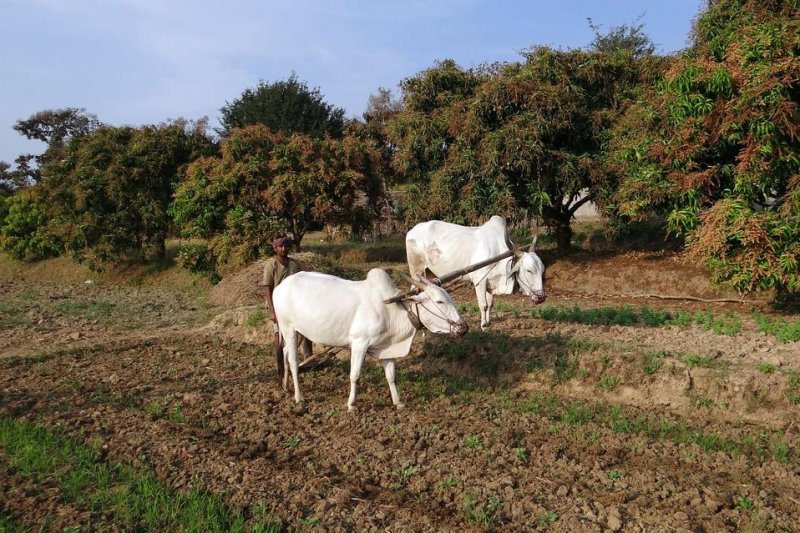The adoption of the ox-led plow by Neolithic farmers led to a steep rise in inequality some 6,000 years ago. Photo by
Pixabay/CC
Sept. 18 (UPI) -- The adoption of the ox-drawn plows, not the advent of agriculture, triggered an accelerating increase in inequality among Eurasian societies beginning around 4000 B.C.
"Ox-drawn plows were the robots of the late Neolithic," Samuel Bowles, an economist at the Santa Fe Institute, said in a news release.
Scientists likened the effects of the ox-drawn plow to the impact of modern mechanization.
"The effect was the same as today: growing economic disparities between those who owned the robots and those whose work the robots displaced," Bowles said.
Bowles and his research partners developed new methods for analyzing architectural data and comparing wealth inequality across different societies, in different places, at different times in history. Researchers used their statistical methods to survey 150 archeological sites, revealing a stark increase in inequality beginning around 4000 B.C. -- several thousand years after the spread of agriculture among Eurasian societies.
Researchers were surprised by how long inequality remained relatively low after the advent of agriculture. The new research, detailed in two papers published this week in the journal Antiquity, undermines the traditional explanation for Neolithic inequality.
"The usual story -- that the societies that adopted agriculture became more unequal -- is no longer valid because we observed that some societies who adopted agriculture were remarkably egalitarian for thousands of years," said Mattia Fochesato, an economist at Bocconi University in Italy.
According to the new research, agriculture in the Middle East and Europe, prior to 4000 B.C., consisted primarily of small garden plots mostly tilled by hand and hoe. Some farmers likely used non-specialized animals, like a milk cow, to plow portions of their fields.
At some point, farmers with greater resources and access to oxen that had been bred to pull plows began farming larger tracts of land. A farmer with a team of ox, researchers calculated, could cultivate ten times the amount of land that a farmer with only a hoe could plant.
Farmers capable of cultivating more land were able to plant more than just sustenance crops. They planted stress-tolerant crops, barley and wheat, which required less labor.
The shift in agricultural technologies and planting patterns put a premium on land and devalued labor, precipitating a rise in inequality. Families with large land holdings got wealthier, while those without land were left behind.
"So long as labor was the key input for production, inequality was limited because families did not differ much in how much labor they could deploy to produce crops," Fochesato said. "But when the most important input became land, differences between families widened because land and other material forms of wealth could be accumulated and transmitted over generations. By chance, or force, or hard work, some families came to have a lot more than others. Then radical inequality arose."
Today, land is just one of many assets that drive inequality. While the study of inequality fell out of favor in the 20th century, economists today are increasingly studying the subject and its relationship to politics.
Previous studies have shown societies with high levels of inequality have historically been more susceptible to political instability and even climate change. One recent study determined climate change is increasing inequality between rich and poor nations.
Authors of the latest studies suggest the relationship between historic inequality and societal crisis could have modern implications as inequality in the United States and Europe continues to increase.
"If there are opportunities to monopolize land or other key assets in a production system, people will," said lead study author Amy Bogaard, an archaeologist based at the University of Oxford. "And if there aren't institutional or other redistributive mechanisms, inequality is always where we're going to end up."















